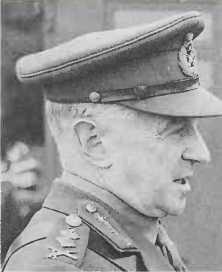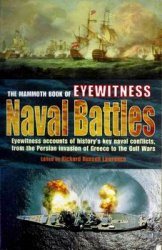Photographic Reconnaissance Unit (PRU). Nos 1, 2, 3 and 4 pru, RAF carried out airborne photography respectively over Europe, the Middle East, India and North Africa during World War II.
Phoumi Nosavan, Gen (b. l920). Laotian. Chief of Staff of the Royal Lao Army in the 1950s. He headed the rightist forces that overthrew Laos’s pro-Western neutralist government, with American encouragement, in December 1959. He served variously as deputy premier, minister of interior, minister of finance and minister of defence in subsequent governments. He owed his considerable political influence to the support of the US, which sought to steer Laos away from neutralism and communism. Once that support was withdrawn after cease-fire in 1973, his power waned and he fled abroad. WST.
Phuoc Binh. Capital of South Vietnam’s Phuoc Long province, located in the foothills of the central highlands just west of major communist supply bases in Cambodia. It was so frequently the target of communist rocket attacks that American troops called it “rocket alley”. In May 1965 communist forces routed a South Vietnamese Ranger Battalion and nearly overran the US Special Forces compound in Phuoc Binh. The city came under heavy direct attack again in the Tet offensive of 1968. From 1966 to early 1969, communist forces held the road to Phuoc Binh, which had to rely on resupply by air. It was the first province capital to fall in 1975. WST.
Phuoc Tuy Province. A coastal province located southeast of Saigon, and the site of an early important victory by communist forces in the Vietnam War (see
BINH GIA, BATTLE OF). It WaS also
The tactical area of operation, from April 1966, of the 1st Australian Task Force and the 161st Battery of New Zealand Artillery, headquartered near Ba Ria, the province capital. The special responsibilities of these forces were to secure Highway 15, which was threatened by the flaf 274th Regiment based in the Hat Dich jungle, and to support operations in the eastern portion of the Rung Sat Special Zone.
Piave, Battle of the (1918) see
ITALIAN CAMPAIGN, WORLD WAR I.
Picardy see somme, battles of the.
Pieds-Noh’s see Algerian campaign.
Pilckem Ridge see ypres, third
BATTLE OF (1917).

Gen Pile: British anti-aircraft specialist
Pile, Gen Sir Frederick (18841976). Br. Served on the Western Front, World War I. After attending Staff College, he switched to the Royal Tank Corps in 1923, soon becoming recognized as a progressive officer who emphasized the potential importance of tanks in land operations. Pile commanded the 3rd Battalion rtc in the Experimental Mechanized Force in 1927—1928 and was then Assistant Director of Mechanization at the War Office until 1932. Having commanded Canal Infantry Brigade in Egypt, 1932-36, he took over the Territorial 1st AntiAircraft Division in 1937. This led directly to his appointment as goc-in-c of Anti-Aircraft Command, a post which he held from July 1939 until April 1945. An outstanding organizer and leader. Pile strove throughout World War II to expand his Command and bring its weapons, ancillary equipment and training up to the standards of efficiency demanded in modern war. Relatively ineffective during the Blitz of 1940-41, Anti-Aircraft Command improved to such an extent that, in 1944, it was able to play a major part in defeating the German V-1 offensive. Pile’s employment of ATS and Home Guard personnel on anti-aircraft duties also freed large numbers of regular gunners for service elsewhere. PJS.
Pill Box. Protected emplacement forming part of permanent defensive fieldworks.
Pilsudski, Marshal Jozef (1867
1935). Polish. The creator of modern Poland. Pilsudski organized a “Polish Legion” in Austrian exile from cl906 and in 1914-16 led it under Austrian command against the Russians. Following the Russian Revolution, 1918, he led the forces of the newly proclaimed Polish Republic against the Red Army: his crushing defeat of
Tukhachevsky at Warsaw, August 15-25 1920, and subsequent advance established the Polish-Russian border until 1939. From 1926 until his death, he was virtual dictator of Poland.
Plain of Jars. A grassy plateau in east central Laos; its three airfields and strategic location made it vital in both Indochina wars. Vietnamese communists tied down the French garrison on the plain (1953), the Laotian Civil War began there (May 1959) and the confrontation between US-supported rightists and neutralist and Pathet Lao forces was played out upon there in 1961. The plain subsequently changed hands several times and, when controlled by the Pathet Lao, was bombed heavily by the US. Mass evacuations reduced its population from
150.000 in 1960 to fewer than
9.000 a decade later. WST.
Plain of Reeds. Covers 2,600 sq miles (6,700 sq km) in the upper Mekong River delta of southern Vietnam. Remoteness, in combination with proximity to supply bases in Cambodia, made the plain an important base for communist forces in the Vietnam War. From it, they could mount operations into the populous, rice-rich delta and retreat either into the plain or across the border into Cambodia. US riverine operations extended to its fringes in the late 1960s.
Plan XVII. French plan adopted in 1913 to stem a German advance in war. It envisaged a French frontal attack on the German centre with the object of dominating her lines of communication and separating her wings. It was prepared by Joffre, by whom its execution was attempted in 1914.




 World History
World History









